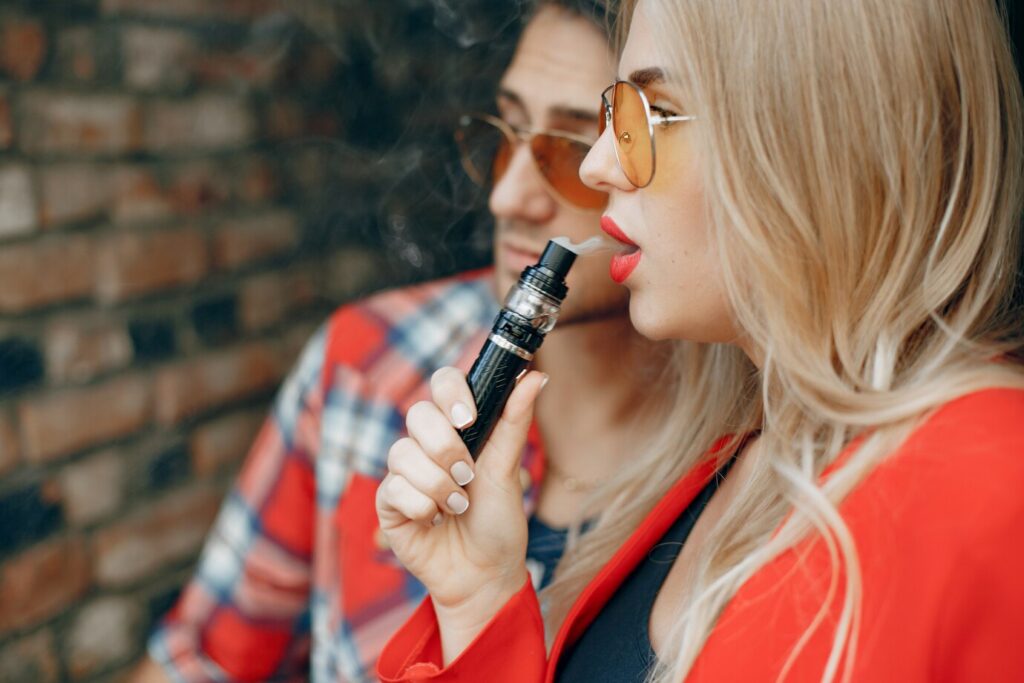Disposable vapes have become increasingly popular among users looking for a simple and convenient way to enjoy vaping. These single-use devices come pre-filled with e-liquid and are ready to use right out of the box, making them appealing to both beginners and experienced vapers. With a variety of flavors and brands available, disposable vapes meet the demands of those who seek ease and variety in their vaping experience.

As the market for vaping continues to grow, it’s vital to understand the implications of using disposable devices. Different brands offer various nicotine levels and flavor profiles, catering to diverse preferences. Alongside enjoyment, users should also consider health and safety aspects, regulations, and the environmental impact of these products.
For anyone looking to explore the world of disposable vapes, this article will provide essential insights on the latest trends, brand evaluations, and practical information to help make informed choices in this evolving landscape.
Key Takeaways
- Disposable vapes are easy to use and come in many flavors.
- Users should be aware of health and safety considerations while vaping.
- The disposable vape market is rapidly evolving with new technologies and brands.
Understanding Disposable Vapes
Disposable vapes are simple, user-friendly devices designed for vaping. They offer convenience and ease of use for those who want to enjoy e-liquids without the hassle of refilling or recharging. This section covers their definition, components, and different types available.
Definition and Function
A disposable vape is a one-time-use electronic device designed for inhaling vaporized e-liquid. Unlike traditional vapes, these devices come pre-filled and do not require assembly or maintenance.
Users simply inhale from the mouthpiece to activate the heating element, turning the e-liquid into vapor. Once the e-liquid or battery is used up, the entire unit is discarded. Their purpose is to provide a straightforward vaping experience without the complexities of reusable devices.
Components and Design
Disposable vapes have several key components that contribute to their functionality:
- Battery: Ranges from 400mAh to 750mAh, providing enough power to vaporize the e-liquid.
- Heating Element: Sometimes called an atomizer, it heats up to turn the e-liquid into vapor.
- E-Liquid Reservoir: Pre-filled with flavored e-liquid, this section stores the liquid to be vaporized.
- Mouthpiece: The area through which users inhale the vapor.
These components are often encased in a sleek, compact design for portability and convenience. There are no buttons to press, making them easy for anyone to use.
Types of Disposable Vapes
There are several types of disposable vapes available, catering to different preferences:
- Basic Models: Simple devices that offer a limited range of flavors and nicotine strengths. Ideal for beginners.
- Premium Options: Feature more complex flavor profiles and higher-quality ingredients. Often have a more robust battery and longer lifespan.
- Market-Specific Variants: Some are designed to comply with specific regulations or target particular markets, such as high-nicotine options for experienced users.
Each type meets a variety of user needs, making disposable vapes versatile for both new and experienced vapers.
Health and Safety Considerations

The use of disposable vapes raises important health and safety issues. It is crucial to understand potential risks and how these devices compare to traditional smoking. Proper disposal practices also play a key role in minimizing environmental impact and health hazards.
Potential Risks
Disposable vapes can pose several health risks. Users are exposed to nicotine, which is addictive and can affect heart health and brain development, especially in young people.
Other concerns include:
- Chemical exposure: Inhalation of harmful chemicals can occur, including heavy metals and toxicants found in vape liquids.
- Lung health: Some users report respiratory issues, such as coughing and wheezing, associated with vaping.
- Battery hazards: Improper charge of lithium-ion batteries can lead to overheating or explosions.
Comparisons to Traditional Smoking
While disposable vapes are often considered less harmful than traditional cigarettes, they are not without risks. Cigarettes contain a wide range of harmful substances that are linked to serious health issues, like lung cancer and heart disease.
Key comparisons include:
- Fewer toxins: Disposable vapes generally have fewer harmful chemicals than cigarettes.
- Addiction potential: Both products contain nicotine, leading to addiction.
- Long-term effects: Since vaping is relatively new, long-term health effects are still not well understood compared to well-studied effects of smoking.
Safe Disposal Practices
Proper disposal of disposable vapes is vital to minimize environmental impact. These devices contain batteries and other components that can be harmful if not disposed of correctly.
Recommendations for safe disposal:
- Recycle batteries: Take used devices to designated recycling centers that accept electronic waste.
- Follow local guidelines: Check local regulations for hazardous waste disposal.
- Avoid trash: Do not throw disposable vapes in regular trash as this can lead to environmental pollution.
By being informed on these considerations, users can make safer choices regarding disposable vaping products.
Regulatory Landscape

The regulation of disposable vapes varies widely around the world. Different countries have developed their own rules to ensure safety and control access. Key areas of focus include global regulations and age restrictions.
Global Regulations
Countries are increasingly monitoring the disposable vape market. Regulations often include limits on ingredients, packaging, and marketing. For example, the European Union has established strict guidelines on nicotine content.
In the United States, the Food and Drug Administration (FDA) oversees vape products. Recent changes focus on preventing youth access while ensuring product safety. Some regions, like Africa, show diverse approaches. Countries such as South Africa have implemented controls on sales, while others lack defined regulations.
Key Points of Global Regulations:
- Varying standards across countries
- Focus on safety and youth prevention
- Influence of local public health policies
Age Restrictions and Access
Most countries enforce age restrictions on disposable vape sales. Typically, the legal age ranges from 18 to 21 years. Compliance is crucial for retailers, with penalties for violations.
Many regions require age verification at the point of sale, either online or in-store. The aim is to reduce youth access to nicotine products. Some local governments also implement additional measures, like flavor bans, to deter underage use.
Important Points on Age Restrictions:
- Common legal age: 18 to 21
- Retailers face strict verification obligations
- Efforts to limit youth exposure through sales controls
Market Insights
The disposable vapes market is shaped by changing consumer habits and significant growth forecasts. Several factors such as convenience and youth appeal are driving these trends.
Consumer Trends
Many consumers, particularly millennials, prefer disposable vapes for their ease of use. They appreciate not needing to refill e-liquid or manage batteries.
Key Drivers of Consumer Preference:
- Convenience: Disposable vapes are ready to use right out of the package.
- Portability: They are lightweight and easy to carry.
- Variety: Consumers enjoy a wide range of flavors and designs.
Surveys indicate that this demographic is increasingly leaning towards disposable options. Brands are responding by launching innovative product lines to meet this growing demand, catering specifically to consumer preferences.
Growth and Projections
The disposable vapes market is projected to grow rapidly in the coming years. The increasing popularity of vaping, especially among younger adults, is a main factor.
Market Growth Factors:
- Advancements in Technology: Newer models are hitting the market with improved user experiences.
- Geographic Expansion: There is rising demand in North America, Europe, and parts of Asia-Pacific.
Reports estimate that this segment could see substantial growth, boosting overall market dynamics. Companies are expected to continue innovating, further attracting a diverse consumer base.
Environmental Impact
Disposable vapes create significant environmental challenges. Their disposal and the waste they generate can harm ecosystems. Understanding waste management issues and exploring eco-friendly options is crucial for addressing these impacts.
Waste Management Challenges
Disposable vapes are difficult to manage in terms of waste. Many users throw away these devices carelessly, contributing to littering. Statistics show that about 10% of users dispose of vapes improperly.
Additionally, used pods and packaging can accumulate in landfills, where they do not break down easily. These products often contain plastic components and batteries, which are harmful to the environment. Schools have faced added pressure from regulations requiring them to handle these hazardous waste items properly. For example, Monroe County schools spend $60 to dispose of just one gallon of vape waste, highlighting the growing burden of this issue on communities.
Eco-friendly Alternatives
Switching to more sustainable options can help mitigate the environmental harm of disposable vapes. Alternatives such as reusable and rechargeable vapes reduce waste significantly. These products can be used multiple times, cutting down on the materials needed to make disposables.
Organizations, like Greenpeace, urge governments to promote the use of these alternatives. Policies that support the reduction of disposable products could shift society from a throwaway culture to one focused on reuse. Recycling programs specifically designed for vape products can also help recover materials. Sourcing eco-friendly materials in vape production is essential for long-term sustainability efforts.














